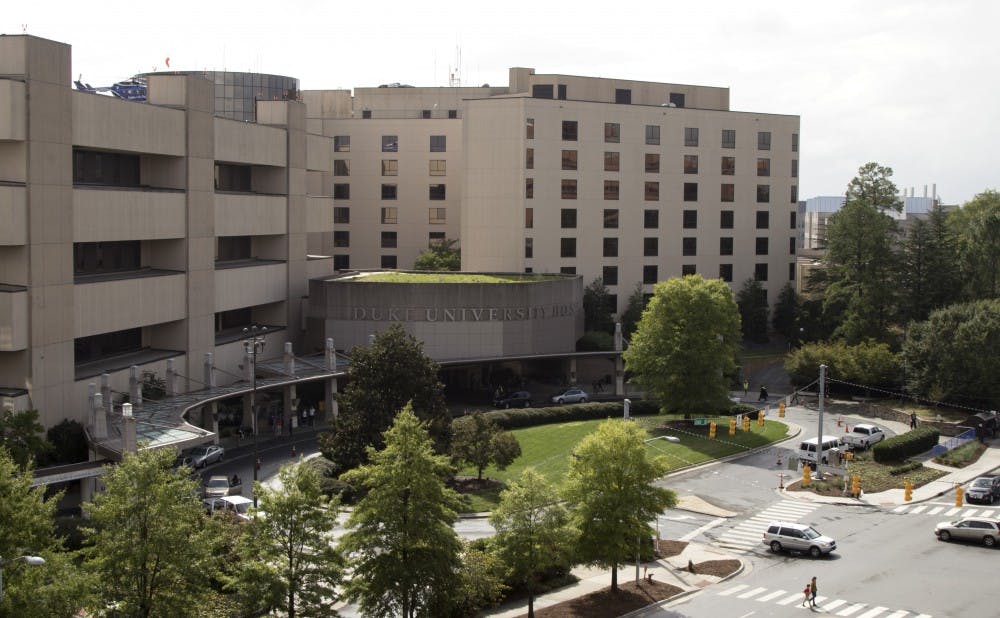Experts are uncertain how antitrust law will be applied to the antitrust case involving Duke’s alleged no-poaching agreement for medical faculty.
Seaman v. Duke University, et al. is a class action lawsuit filed by Dr. Danielle Seaman, assistant professor of radiology, on behalf of all similarly situated medical faculty at Duke and the University of North Carolina at Chapel Hill since 2012. Filed June 9, the suit alleges that Duke and UNC entered into an agreement not to hire each other’s staff for parallel positions—an agreement that violates antitrust laws. The defendants are currently attempting to get the case dismissed. However, Clark Havighurst, Willam Neal Reynolds professor emeritus of law, explained that the outcome of the case is unpredictable.
“The way judges think is anybody’s guess,” Havighurst said. “How lawyers present their cases is their business. But the judges tend to rule in these matters by how it strikes them.”
Despite the potential for inconsistencies by judges handling the suit—which was filed to the U.S. District Court for the Middle District of North Carolina—a number of historical cases provide precedents for the direction the case could take.
“There have been many [antitrust cases involving educational institutions], particularly concerning agreements restraining the commercial activities of college sports programs,” wrote Einer Elhauge, a law professor at Harvard Law School, in an email.
Elhauge referred to two cases in particular: NCAA v. Board of Regents of the University of Oklahoma—a 1984 Supreme Court case challenging the NCAA’s limitation on the number of television broadcasts permitted for each university—and Law v. NCAA—a 1998 U.S. Court of Appeals case challenging a salary cap for college coaches. Both decisions deemed the NCAA to be in violation of the Sherman Antitrust Act.
In a 1993 case, United States v. Brown University, the Department of Justice alleged that the eight Ivy League universities and the Massachusetts Institute of Technology illegally cooperated on financial aid awards. The schools agreed to collectively determine a common financial aid package based on need, wrote Scott Hemphill, a law professor at the New York University School of Law, in an email. MIT decided to litigate the case, which resulted in a ruling that the collaborative system itself was not unlawful.
Additionally, the High-Tech Employee case—concerning an agreement by tech companies not to hire away each others’ workers—also provides a precedent for the Duke and UNC case, Elhauge said. In 2010, the Department of Justice Antitrust Division filed a complaint alleging that a number of major Silicon Valley tech companies—including Google, Apple and Adobe—had agreed to a no-hire agreement in order to prevent rampant employee turnover.
The resultant class action lawsuit was handled by Lieff Cabraser Heimann & Bernstein, LLP, the same law firm that is representing Seaman in the lawsuit against Duke and UNC. The High-Tech Employees case ended when a district court approved a $415 million settlement.
“These are class action lawyers. They don’t like to try cases, they like to settle them,” Havighurst said. “A fair amount of cases are settled with very little benefit to the people allegedly injured, but a lot to the lawyers who never actually had to prove the case.”
Approximately 90 percent of antitrust cases are settled out of court, he noted. For civil suits in general, this figure is even higher.
“An institution might decide that they want to settle rather than litigate it because it’s too expensive to litigate,” Havighurst said.
However, the University Health System may be more willing to pursue this case in court. The defendants submitted a motion to dismiss the case on grounds of the Parker immunity doctrine, which allows certain state actions to be immune from antitrust laws, though Elhauge explained this is unlikely to succeed.
“Even if UNC counted as a state agency, it would be immune only if an agreement to divide the labor market for faculty was clearly authorized by the state,” he said.
Several professors noted that if the court rejects Duke’s motion, Seaman will face challenges in proving the existence of an explicit agreement.
Havighurst explained that the Duke School of Law and the UNC School of Law had a similar coordinated effort not to cross-hire but that it was not unlawful. In addition, former Duke administrators have previously stated that Duke and UNC avoided hiring each other’s faculty in the past.
“For years, we did not consider recruiting people from UNC because it was just not thought to be good for relationships,” Havighurst said. “It wouldn’t have been good for the mission of either school.”
Seaman will have to prove that the dialogue between Duke and UNC resulted in an agreement rather than a loose guideline, Elhauge added.
“Mere coordination is not illegal. If there is an actual agreement, then it would be,” he said.
Havighurst explained that he fears both schools’ work will be made more difficult if the poaching claims are proven.
“I would be afraid we’d start seeing raids to attract the doctor’s patients,” he said. “That would be truly regrettable because all it does is raise the cost of medical care so everybody’s scrambling for the chance to milk the financing system for more and more money.”

